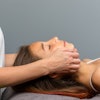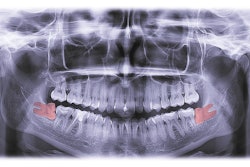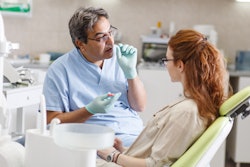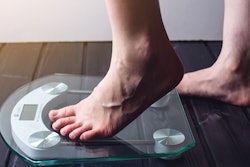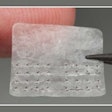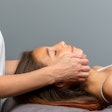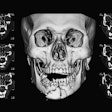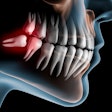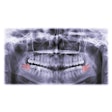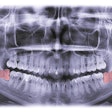
Oxygen-ozone therapy may effectively improve healing after extractions in patients susceptible to medication-related osteonecrosis of the jaw (MRONJ), according to research published on May 29 in Oral Diseases.
Furthermore, individuals who receive oxygen-ozone therapy may show significant improvement in wound healing postextraction during both the inflammatory and proliferative phases, the authors wrote.
"Oxygen-ozone therapy shows promise in improving post-extraction healing in patients at risk of MRONJ," wrote the authors, led by Olga Di Fede of the University of Palermo Department of Precision Medicine in Medical, Surgical, and Critical Care in Italy.
A randomized, open-label, phase II clinical trial was conducted involving 117 patients (27 male and 90 female) at risk of MRONJ. The study evaluated the efficacy of injecting an oxygen-ozone mixture into the postextraction site. Participants were randomly assigned to one of two groups: the oxygen-ozone therapy group or the standard tooth extraction protocol group.
Postextraction wound healing was assessed using the inflammatory proliferative remodeling (IPR) wound healing scale. At the end of the six-week follow-up period, the total IPR score was calculated. Scores of 0 to 4 indicated poor healing, 5 to 10 indicated acceptable healing, and 11 to 16 suggested excellent healing, the authors wrote.
During the inflammatory phase (three to five days postintervention), patients in the treatment (T) group exhibited a mean score of 2.00 with a standard deviation of 0.87. In contrast, patients in the control (C) group had a mean score of 2.49 with a standard deviation of approximately 0.88. The Wilcoxon signed-rank test revealed a significant difference between the groups (p = 0.006), indicating notably better healing in the T group during this critical phase, they wrote.
In the proliferative phase (14 days postintervention), the T group achieved a mean score of 4.24 with a standard deviation of 1.51, while the C group had a mean score of 3.70 with a standard deviation of 1.02. Again, the Wilcoxon signed-rank test showed a highly significant difference between the groups (p < 0.001), highlighting a substantial improvement in healing within the ozone therapy group during this phase.
Additionally, multivariable analysis showed a lower probability of an elevated IPR score at 14 days in the control group compared to the treatment group. Additionally, patients who received two weekly ozone infiltrations (out of a total of nine) demonstrated an improved recovery rate with scores of 3 or higher, they wrote.
However, the study had limitations, such as the small sample size. Future research should involve larger-scale, multicenter studies to confirm the findings, the authors added.
"The application of oxygen–ozone therapy could present an innovative, powerful, and effective adjuvant for mitigating the risk of MRONJ and maximizing the efficacy of standard protocols (medical and surgery), particularly when operative procedures might pose an additional burden for complex cases and medical challenges," they concluded.



